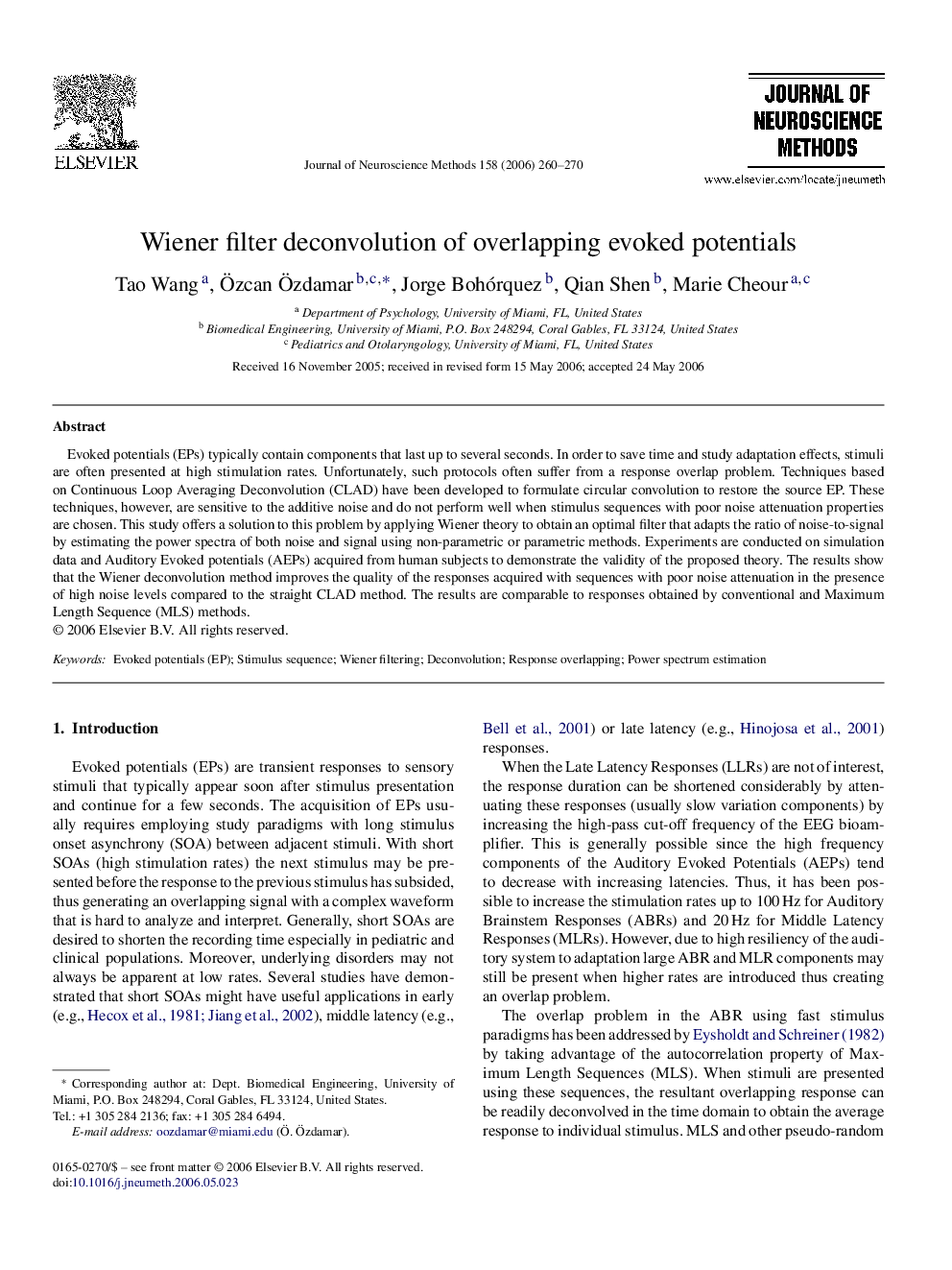| Article ID | Journal | Published Year | Pages | File Type |
|---|---|---|---|---|
| 6270582 | Journal of Neuroscience Methods | 2006 | 11 Pages |
Evoked potentials (EPs) typically contain components that last up to several seconds. In order to save time and study adaptation effects, stimuli are often presented at high stimulation rates. Unfortunately, such protocols often suffer from a response overlap problem. Techniques based on Continuous Loop Averaging Deconvolution (CLAD) have been developed to formulate circular convolution to restore the source EP. These techniques, however, are sensitive to the additive noise and do not perform well when stimulus sequences with poor noise attenuation properties are chosen. This study offers a solution to this problem by applying Wiener theory to obtain an optimal filter that adapts the ratio of noise-to-signal by estimating the power spectra of both noise and signal using non-parametric or parametric methods. Experiments are conducted on simulation data and Auditory Evoked potentials (AEPs) acquired from human subjects to demonstrate the validity of the proposed theory. The results show that the Wiener deconvolution method improves the quality of the responses acquired with sequences with poor noise attenuation in the presence of high noise levels compared to the straight CLAD method. The results are comparable to responses obtained by conventional and Maximum Length Sequence (MLS) methods.
